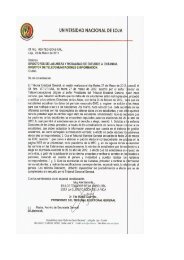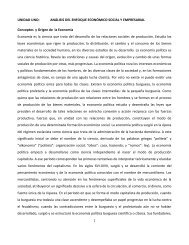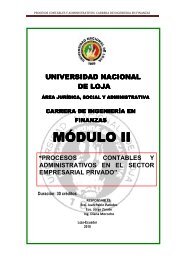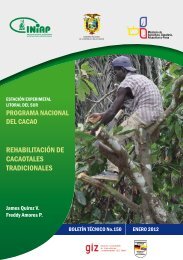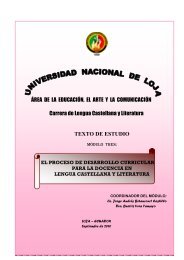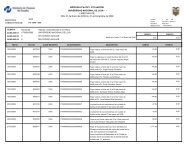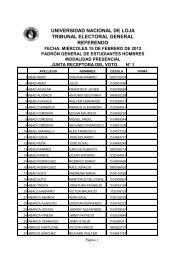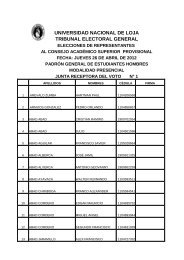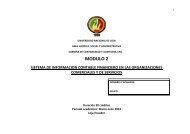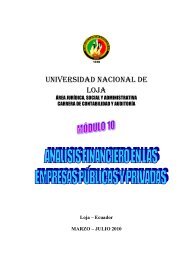module 5 planning of the english language teaching-learning process
module 5 planning of the english language teaching-learning process
module 5 planning of the english language teaching-learning process
Create successful ePaper yourself
Turn your PDF publications into a flip-book with our unique Google optimized e-Paper software.
UNIVERSIDAD NACIONAL DE LOJA<br />
Área de la Educación el Arte y la Comunicación<br />
English Language Career<br />
photocopiable transparencies<br />
Cassette recorder/CD player<br />
• presenting new <strong>language</strong> in dialogues and<br />
stories<br />
• giving models for pronunciation practice<br />
• recording learners' oral performance<br />
• listening for pleasure<br />
• online communication (chatting)<br />
• online newspapers and magazines<br />
• project work using <strong>the</strong> Internet<br />
Language laboratory<br />
• pronunciation practice<br />
• extensive listening<br />
• monitoring and giving feedback to<br />
individual learners<br />
•developing speaking skills<br />
O<strong>the</strong>r aids are: realia, flashcards (cards small enough to hold up one after<br />
ano<strong>the</strong>r, with simple drawings or single words or phrases on <strong>the</strong>m), puppets<br />
(models <strong>of</strong> people or animals that you can move by putting your hand inside<br />
<strong>the</strong>m), charts -(diagrams that show information) and <strong>the</strong> teacher.<br />
What different uses can you think <strong>of</strong> for <strong>the</strong>se aids? Here are some <strong>of</strong> <strong>the</strong> most<br />
important uses:<br />
Realia<br />
Real objects that we can easily bring into <strong>the</strong> classroom can be used to teach<br />
vocabulary, as prompts for practising grammatical structures or for building<br />
dialogues and narratives, for games and quizzes. Realia also include real texts,<br />
such as menus, timetables, leaflets, etc.<br />
Flashcards<br />
Like realia, flashcards can be used for <strong>teaching</strong> individual words or as prompts<br />
for practising grammatical structures.<br />
Puppets<br />
Puppets are an excellent resource for <strong>teaching</strong> young learners. For example,<br />
we can introduce new <strong>language</strong> in dialogues between pairs <strong>of</strong> puppets (or<br />
between one puppet and <strong>the</strong> teacher). Children can also make <strong>the</strong>ir own simple<br />
puppets.<br />
Charts<br />
We can use posters and wallcharts (drawings or graphs that can be put on <strong>the</strong><br />
wall <strong>of</strong> a classroom) to display larger, more detailed pictures, or a series <strong>of</strong><br />
pictures telling a story or showing related objects in a lexical set. A phonemic<br />
chart shows <strong>the</strong> phonemic symbols and <strong>the</strong> positions in <strong>the</strong> mouth where <strong>the</strong><br />
different sounds are made. The teacher can point at <strong>the</strong> symbols to prompt<br />
learners to correct <strong>the</strong>ir pronunciation. We can also use charts to display<br />
diagrams, prepared drawings and tables <strong>of</strong> irregular verbs, or to build up a<br />
class dictionary.<br />
The teacher<br />
The teacher can use hand gestures, facial expressions and mime (actions<br />
which express meaning without words) to elicit vocabulary items, clarify<br />
meaning and create context. We can also build up a set <strong>of</strong> signals, such as<br />
[Escribir texto] Página 87



